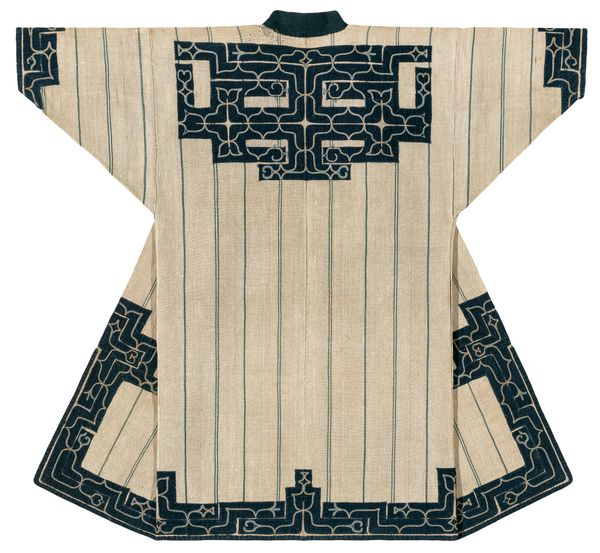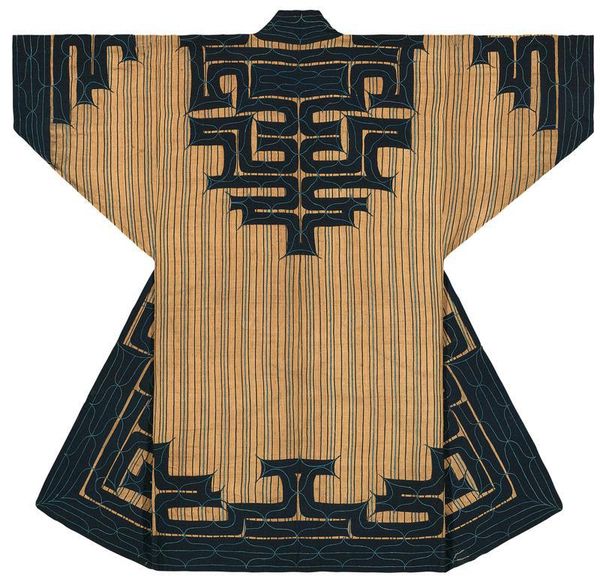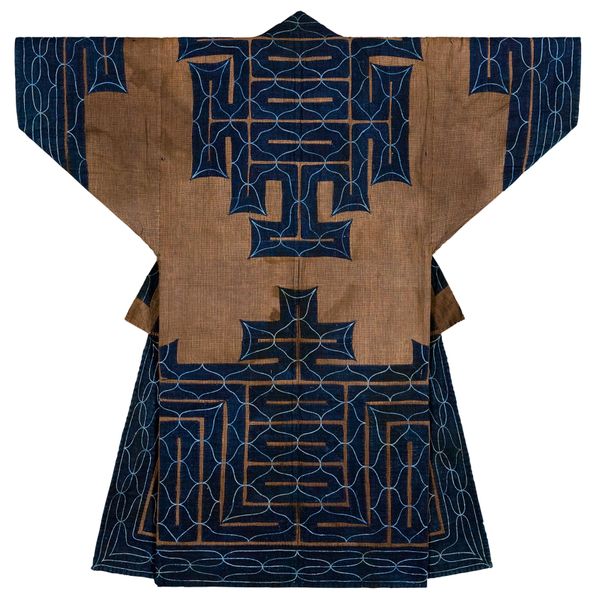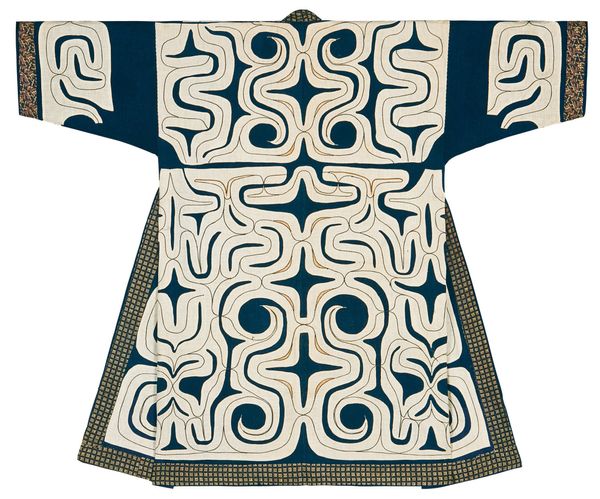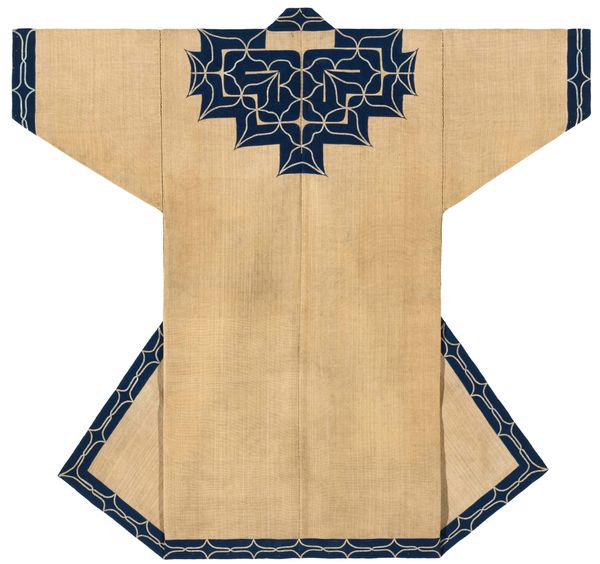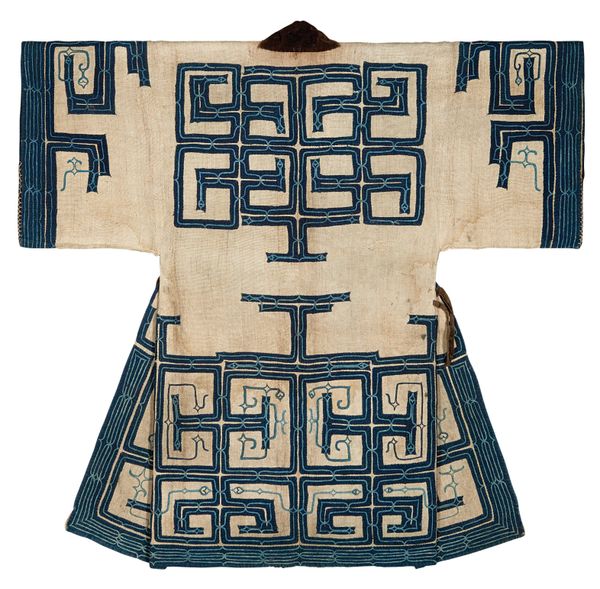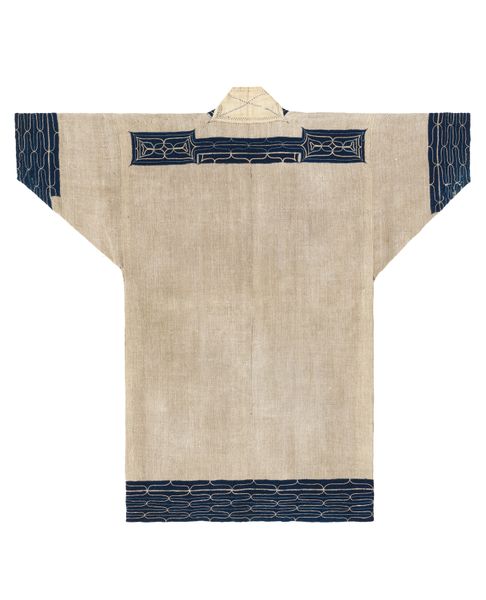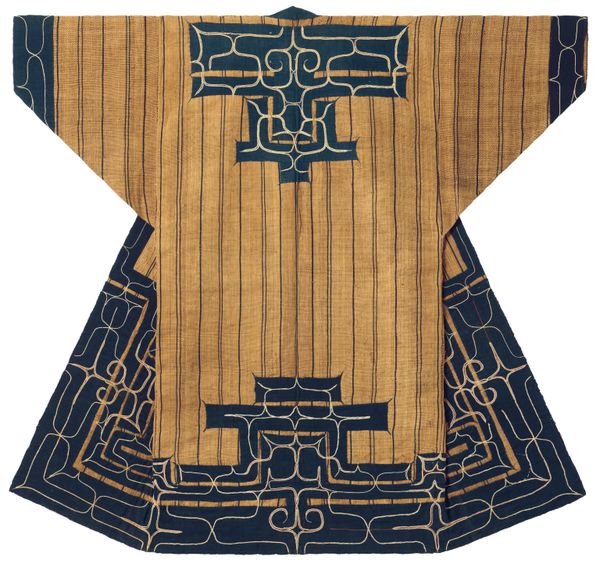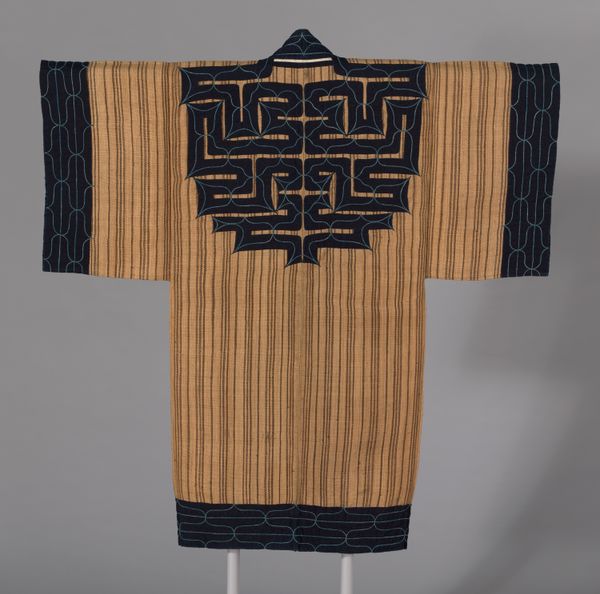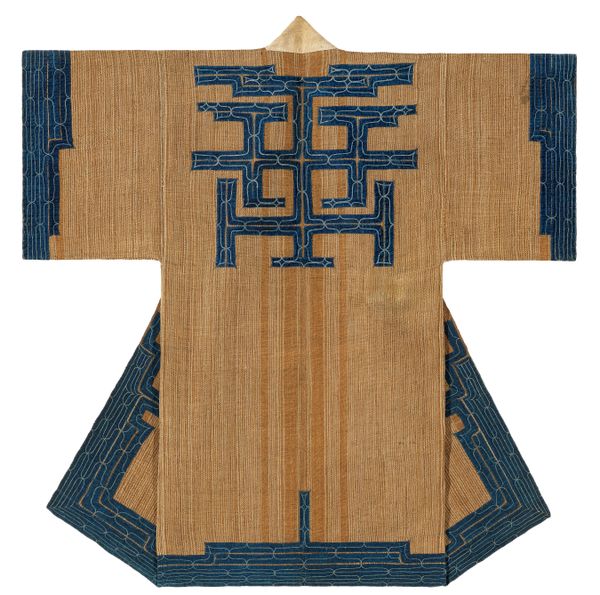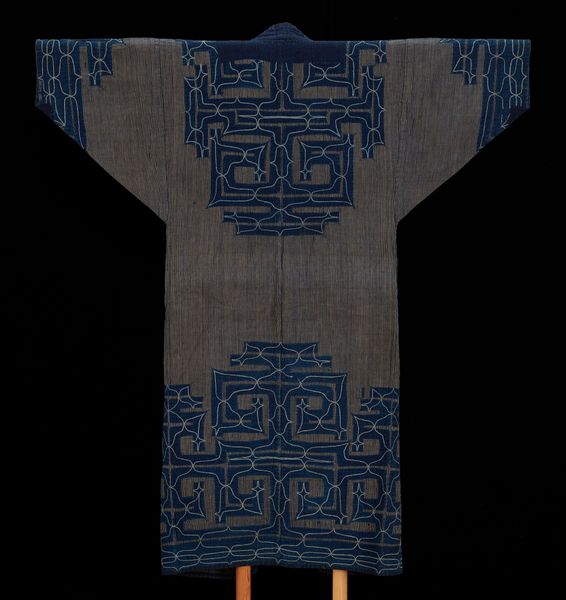
fibre-art, weaving, textile
#
fibre-art
#
asian-art
#
weaving
#
textile
#
geometric
Dimensions: 48 × 45 1/2 in. (121.92 × 115.57 cm) (overall)
Copyright: Public Domain
Curator: Look at the incredible textile work in front of us: this is an Attush robe, created in the late 19th century, currently residing here at the Minneapolis Institute of Art. Editor: Immediately, the geometry grabs me. The strong contrast between the tan base cloth and the bold indigo dye really makes those swirling motifs pop. There’s something very graphic about it, almost modern. Curator: Indeed. We can analyze it from its materials: it’s a woven textile, but beyond just utility, it also signifies social status. These robes were often worn by the Ainu people of northern Japan during important ceremonies. It moves beyond 'just a robe' and makes itself culturally relevant. Editor: Right, it is vital to contextualize this robe within the complex history of Ainu culture. We should also remember their marginalization within Japanese society, which certainly shaped the creation and, arguably, later presentation of items like this in Western museum settings. How does it make the robe more than just a textile object to the community it belonged to? Curator: Precisely. The process and material here—weaving and the natural dyes used—become more important than any surface-level aesthetic. You are witnessing not only artistry, but hard labor, specialized knowledge passed down through generations, and also access to certain material resources. It is less the 'art' and more a demonstration of life. Editor: And it is these complexities, this push and pull between craft, status, identity, and political history that truly resonates when engaging with such a powerful garment. Seeing it here also pushes me to remember the path that such an object takes as it changes hands. Curator: Absolutely. When we consider the means and the history behind something, it changes the lens on the whole creation. It gives new context. Editor: Definitely. Approaching an artwork this way highlights the layered cultural importance imbued within its creation and exhibition. It encourages us to appreciate it not just for its aesthetic qualities, but its history.
Comments
No comments
Be the first to comment and join the conversation on the ultimate creative platform.
